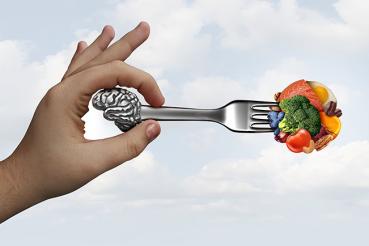It's telling that although stroke is the third leading cause of death for women in the U.S., and that twice as many women die of stroke than of breast cancer, most women aren't aware of these facts.
As is the case with heart attacks, stroke is often perceived as occurring mostly in men — even though women account for 51% of all people worldwide who have experienced a stroke.
That's why neurologist Sarah Song, MD, MPH of the Rush Stroke Program says it's essential for women to be savvy when it comes to stroke.
Understanding your risks empowers you to take steps to prevent a stroke. And being aware of the symptoms will enable you to get treatment faster if you do have a stroke, when every second counts.
Whether you're a woman or have loved ones who are women, Song says knowing these facts can help save lives:
1. Don't dismiss stroke symptoms.
These symptoms are commonly identified with stroke in both men and women:
- Numbness on one side of the body and/or face
- Weakness on one side of the body and/or face
- Loss of vision
- Double vision
- Vertigo, or room-spinning
- Slurred speech
- Difficulty speaking or understanding language
If you notice any of these symptoms in yourself or another person, call 911 immediately, even if the symptoms don't cause pain or they go away.
Just remember that "time is brain." If it is a stroke, the sooner you get treatment, the better your chance of surviving. Prompt treatment also improves your chances for successful rehabilitation and recovery.
2. Strokes in young women are on the rise.
It's true that strokes most often strike older women (and men). But the World Stroke Organization reports that 8% of all strokes — and 4% of all stroke-related deaths — occur in people under the age of 44.
One potential reason is thought to be the increase in obesity among younger women. Studies have shown that women who are obese or have gained more than 44 pounds since age 18 are about 2.5 times more likely to have a stroke than women who maintain a healthy weight.
While obesity is a stroke risk factor on its own, it also contributes to other significant risk factors, including high blood pressure, Type 2 diabetes and heart disease — all of which are increasingly common in women today.
Pregnancy and childbirth can also make young women, including transgender women, more vulnerable to stroke.
Most maternal strokes happen within the first few weeks after birth, triggered by blood loss or hormonal changes. Stroke is also associated with certain complications of pregnancy, including infections and preeclampsia. And, generally speaking, clotting activity is heightened during pregnancy; if clots form in the blood vessels of the veins, they can lead to a stroke.
3. Black and Hispanic women have a higher risk of stroke.
According to the Office of Minority Health, part of the U.S. Department of Health and Human Services, Black women are twice as likely to have a stroke as white women — and more likely to die from a stroke than either white women or Hispanic women.
One reason? High blood pressure, diabetes and obesity — three of the biggest risk factors for stroke — are all more common in Black women than white women.
A lesser known risk factor: sickle cell disease, a genetic disease common in Black Americans (around 1 in 365 Black Americas is born with it). Twenty-five percent of adults with sickle cell disease will suffer a stroke by the age of 45.
You Might Also Like:
8 Ways to Prevent Stroke and Spot Its Warning Signs
Hispanic women, too, experience high blood pressure, diabetes and obesity at higher rates than non-Hispanic white women, putting them at increased risk of both stroke and stroke-related deaths.
Working to improve your weight, blood pressure and cholesterol with lifestyle changes and medications can help reduce the risk not only of stroke, but of heart disease and cancer.
4. Using birth control pills can potentially raise stroke risk.
The American Stroke Association reports that women who take birth control pills may be twice as likely to have a stroke as those who don't. Birth control pills (often referred to as "the pill") can cause blood clots to develop. In some cases, blood clots can possibly travel to the brain, causing a stroke or heart attack.
Since the stroke risk for healthy young women is low to begin with, you don't necessarily have to forgo the pill. Your doctor can help determine whether oral contraceptives or another form of birth control is best for you.
That means identifying your other risk factors. If you take oral contraceptives, any additional risk factors — especially smoking — will increase your potential for stroke even more. The risk of stroke related to oral contraceptives also increases with age.
5. There's a link between migraines and stroke.
These crippling headaches — far more common in women than men — have been associated with an increased risk of stroke when accompanied by a migraine aura.
The reasons for this association are not well understood. But from what we do know, aura (where you experience flashes of light, light or noise sensitivity, tingling in the hands or face, partial loss of vision or other symptoms) must be associated with the headache to increase stroke risk. It may also be associated with hormonal changes.
The American Stroke Association says women who experience migraines with aura are up to 10 times more likely to have a stroke, depending on their other risk factors. Smoking and using oral contraceptives, in particular, can increase your risk significantly.
6. Women should watch their waistlines.
Studies have shown that postmenopausal women with a waist measuring more than 35.2 inches and a triglyceride (blood fat) level higher than 128 mg/dL have five times the risk of stroke.
And there are other serious health risks associated with an "apple" body shape in women, including heart disease and diabetes.
There are some stroke risk factors you can't control, like your family history, ethnicity/race and age. So it is helpful instead to focus on the behaviors you can change.
That includes making time to exercise and eating a diet rich in fruits, vegetables and whole grains. Adopting a healthy lifestyle may help prevent stroke in women, especially if you have other stroke risk factors.
7. A transient ischemic attack, or “mini-stroke,” is a warning sign.
A transient ischemic attack, also known as a TIA or "mini-stroke," causes the same symptoms as a stroke but lasts only minutes to a few hours.
Even though there may not be lasting effects from a TIA, you should still seek immediate medical help. That includes talking to your doctor about how to prevent a full-blown stroke, because having a TIA puts you at greater risk for having a stroke. A TIA is an opportunity to look for stroke risk factors that could be better controlled.
The good news: With early management and appropriate behavioral changes and other interventions, many of your stroke risks can be lowered.




